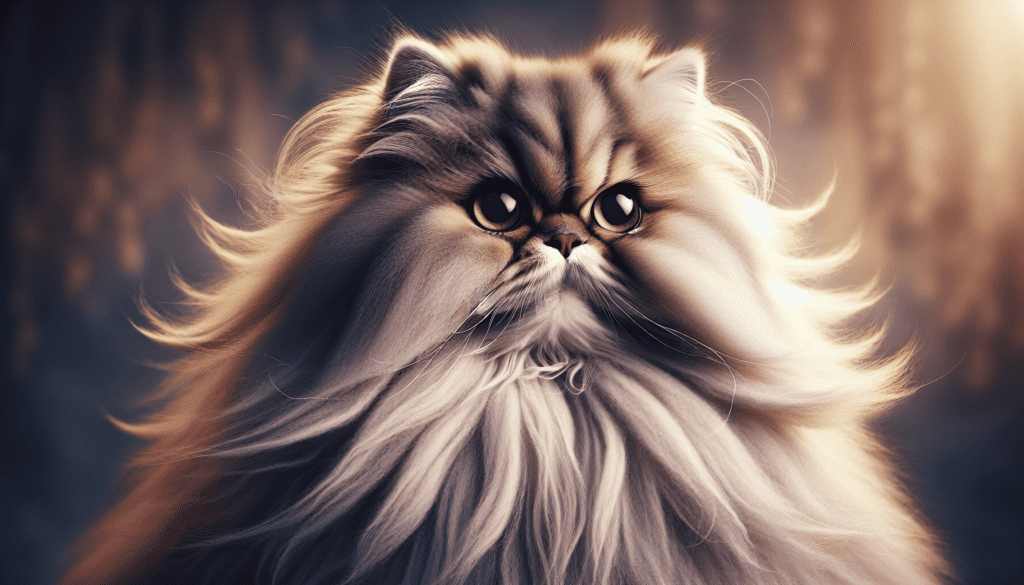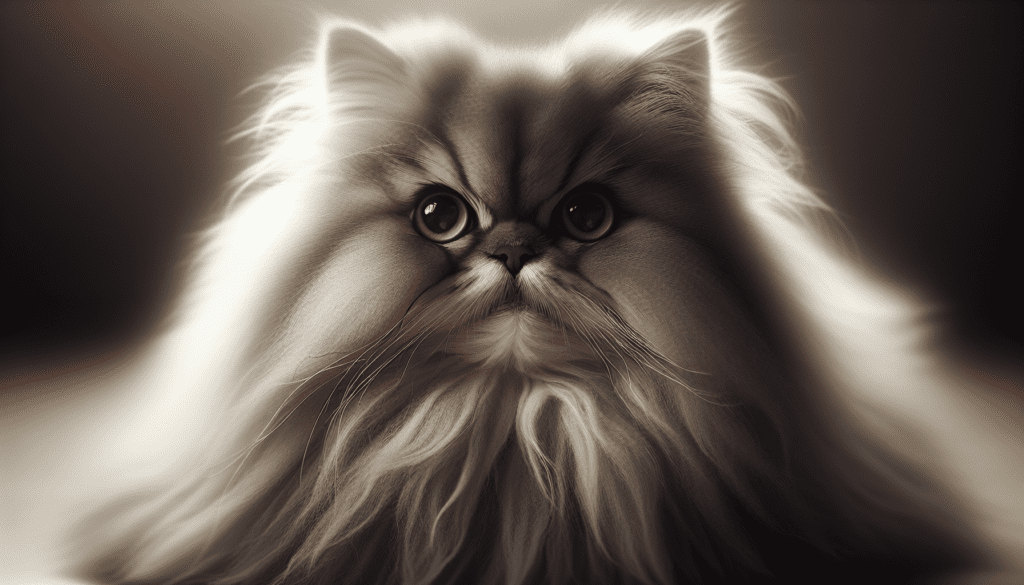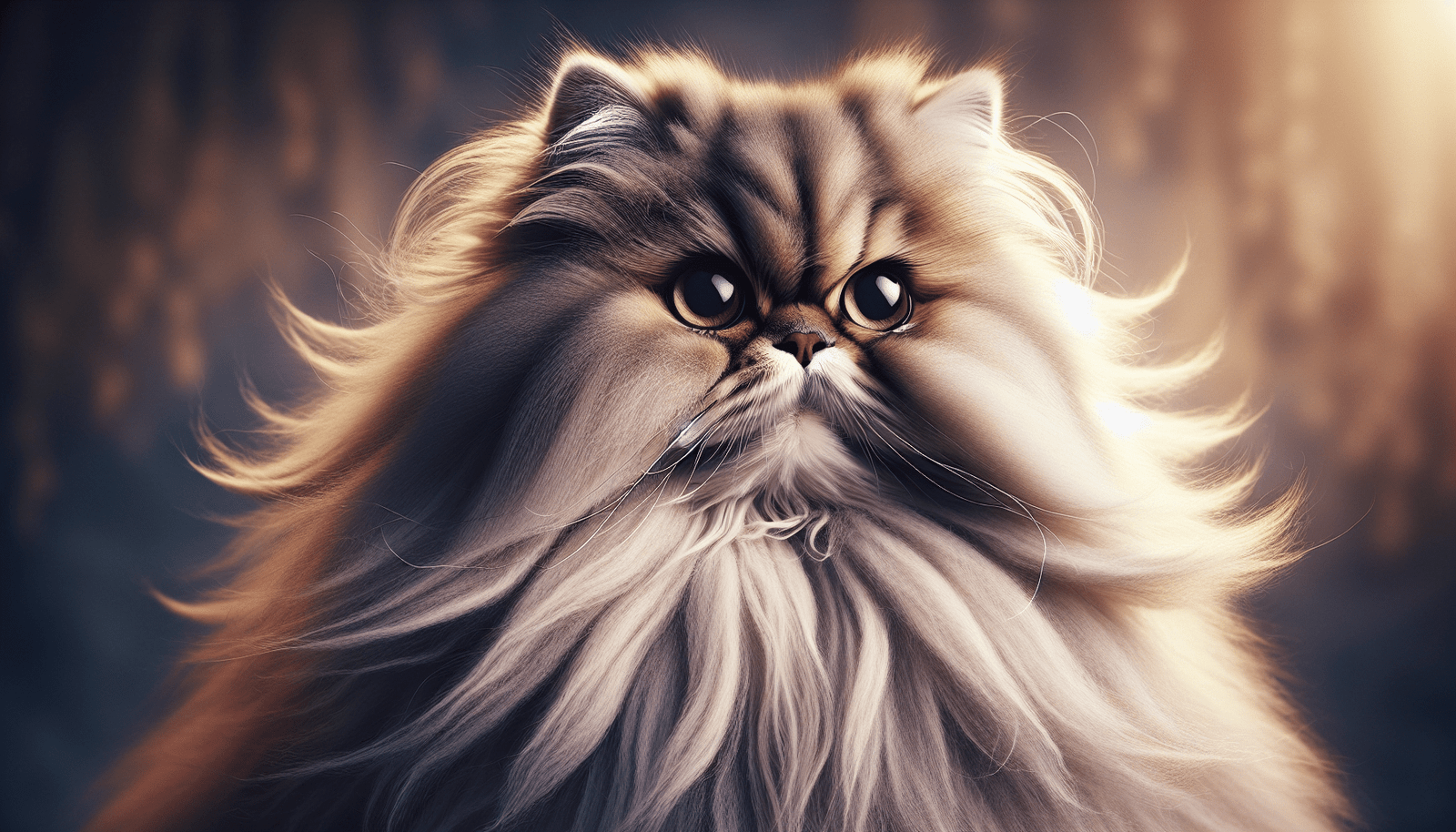Did you know that Persian cats have been selectively bred for specific traits? These elegant felines have captured the hearts of many with their distinctive features, but have you ever wondered which traits exactly are deliberately chosen when breeding them? From their luxurious long fur to their sweet and docile nature, Persian cats are carefully bred to showcase certain characteristics that make them truly unique. Join us in exploring the fascinating world of Persian cat breeding and discover the traits that have made these felines so beloved among cat enthusiasts and pet owners alike.
Physical Appearance
Facial Structure
Persian cats are known for their distinctive facial structure. They have a flat face, which is one of their defining characteristics. This flat face gives them a unique and adorable appearance, with their wide-set eyes and small nose. The flat face is a trait that is selectively bred for in Persian cats, as it is highly desirable among breeders and enthusiasts.

Body Type and Size
Persian cats are generally medium to large in size. They have a heavy and solid build, with a muscular body structure. This body type gives them a sturdy and robust appearance. Breeders focus on maintaining and improving the body type and size of Persian cats to ensure they match the breed standard.

Coat Color and Length
One of the most striking features of Persian cats is their coat. They come in a variety of colors, including solid colors, bi-colors, and patterns. The coat of a Persian cat is long and dense, giving them a luxurious and glamorous look. Maintaining the coat color and length is important in breeding Persian cats to enhance their aesthetic appeal.
Personality
Persian cats have a distinct personality that sets them apart. They are known to be calm and gentle creatures, making them excellent companions. Their independent nature is another trait that distinguishes them, as they are not overly demanding or clingy. Persian cats are naturally reserved, often observing their surroundings before getting involved. This personality combination makes them great pets for individuals or families seeking a relaxed and low-maintenance companion.
Health
While Persian cats are generally healthy, they do have some potential health issues that breeders and owners need to be aware of. Breathing problems can occur due to their flat face structure, which can hinder their airflow. Eye and tear duct disorders are also common in Persian cats, requiring regular monitoring and, in some cases, treatment. Kidney disease is another health concern in this breed, so it is important to maintain a proper diet and hydration to minimize the risk.
Grooming Needs
Persian cats have specific grooming needs due to their long and dense fur. Regular brushing is necessary to prevent matting and tangling of the coat. This also helps to reduce the amount of shedding and keeps their fur looking and feeling its best. Eye care is crucial for Persian cats, as their eyes are prone to tearing and discharge. Regular cleaning and monitoring for any signs of infection or irritation is essential. Bathing should be done as needed to keep their coat clean, but care should be taken to ensure thorough drying afterward to prevent skin issues.
Special Care Requirements
In addition to regular grooming and healthcare, Persian cats require special care in other areas as well. Regular veterinary check-ups are vital to monitor their overall health and address any issues promptly. Due to their thick coat, Persian cats are sensitive to extreme temperatures, both hot and cold. It is important to provide a climate-controlled environment to ensure their comfort and well-being.
Show Qualities
Persian cats possess certain qualities that are highly sought after in show competitions. Good structure and proportions are important, as judges look for a balanced and well-proportioned body. Their movements should be fluid and graceful, showcasing their elegance and poise. Breeders and exhibitors put significant effort into breeding and training their Persian cats to excel in show competitions and showcase these exceptional qualities.
Genetic Testing
Breeders of Persian cats often prioritize genetic testing to ensure the health and well-being of their cats and future generations. Screening for inherited diseases is crucial to identify any potential health issues that may be present in the breed. Additionally, testing for specific genetic traits can help breeders make informed decisions and enhance the desirable characteristics of Persian cats.
In conclusion, Persian cats are a breed renowned for their unique physical appearance and distinct personality traits. Breeders selectively breed for traits such as the flat face, large round eyes, and small nose that contribute to their adorable facial structure. Their medium to large size and solid build give them a robust and sturdy appearance. The variety of coat colors and their long and dense fur make Persian cats visually stunning. Their calm and gentle nature, independence, and reserved behavior make them ideal companions for those seeking a relaxed and low-maintenance pet. However, it is important to be aware of potential health issues such as breathing problems, eye disorders, and kidney disease. Grooming needs include regular brushing, eye care, and bathing, while special care requirements involve regular veterinary check-ups and climate control. Persian cats with good structure, proportions, and graceful movements excel in show competitions. Lastly, genetic testing plays a crucial role in ensuring the health and well-being of Persian cats by screening for inherited diseases and testing for specific genetic traits. Persian cats are truly unique and cherished companions for those who appreciate their beauty and gentle nature.

